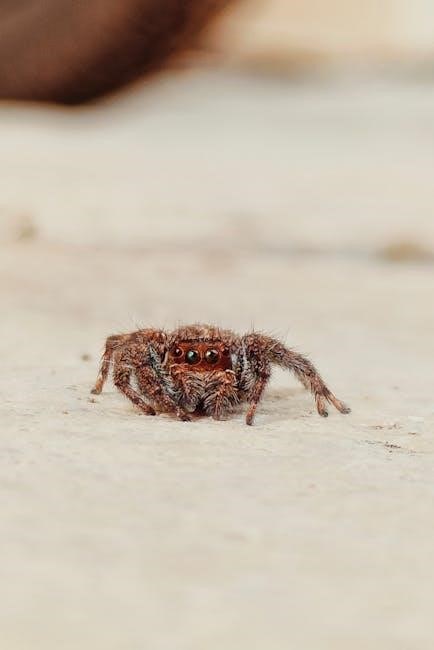
Understanding the Manual Clutch System for Predator 212
The manual clutch system for the Predator 212 typically includes a clutch kit, flywheel, and springs. It allows manual control of power delivery, essential for go-kart applications, ensuring smooth acceleration and deceleration while maintaining optimal engine performance and compatibility.
A manual clutch is a essential component for engines like the Predator 212, enabling drivers to control power delivery and gear shifting. It allows the engine to disconnect from the transmission, providing smooth acceleration and deceleration. For go-kart applications, a manual clutch is crucial, as it grants precise control over the engine’s power output. The Predator 212, often used in go-karts, benefits from a manual clutch system due to its ability to optimize performance and responsiveness. By engaging and disengaging the clutch, drivers can better manage speed and torque, especially during starts and stops. This system is particularly advantageous for racing or high-performance scenarios, where quick and smooth gear changes are vital. The manual clutch also helps reduce wear on the engine and transmission by allowing the driver to control the flow of power. Proper installation and adjustment are key to ensuring optimal functionality and longevity of the clutch system.

Choosing the Right Clutch for Predator 212
Selecting the correct clutch for the Predator 212 involves considering factors like bore size, chain pitch, and horsepower compatibility. A 3/4″ bore with a 35 or 420 chain pitch is often recommended for optimal performance and durability, ensuring smooth power delivery and ease of installation.
Compatibility and Specifications
When selecting a manual clutch for the Predator 212, compatibility and specifications are critical. The clutch must match the engine’s bore size, typically 3/4″, and chain pitch, which can be either 35 or 420, depending on the setup. Ensure the clutch is designed for the Predator 212’s horsepower output, as mismatches can lead to poor performance or premature wear. Many users recommend clutches like the 3D Motorsport manual clutch, known for its durability and smooth engagement. Additionally, verify that the clutch kit includes necessary components such as the flywheel, springs, and alignment tools. For higher horsepower builds, billet flywheels and performance springs are often suggested to handle increased stress. Always check manufacturer specifications to confirm compatibility with your Predator 212 engine configuration, whether it’s a standard or modified setup. Proper alignment and installation are also essential to avoid damage and ensure optimal functionality.

Installation Process
Align the clutch with the flywheel, ensuring proper seating. Secure it firmly, following manufacturer instructions. Use a Philips screwdriver to set the lash on the compression stroke. Ensure smooth engagement to prevent damage;
Step-by-Step Installation Guide
- Begin by installing the flywheel onto the Predator 212 engine, ensuring it is properly seated and secured.
- Next, align the clutch with the flywheel, making sure it fits smoothly without forcing it into place.
- Use a Philips screwdriver to set the lash on the compression stroke, bringing the engine to top dead center (TDC) before securing the clutch.
- Tighten all bolts gradually and evenly to avoid warping the flywheel or clutch.
- Connect the clutch cable or lever, adjusting its length to achieve the desired engagement point.
- Test the clutch by slowly releasing it to ensure smooth engagement and disengagement.
- Finally, check for proper operation by accelerating and decelerating to confirm the clutch functions as intended.
This process ensures a secure and functional installation of the manual clutch system.

Setting Up Gear Ratios
Calculate gear ratios by selecting sprocket sizes and chain pitch to optimize speed and torque. Adjusting the rear sprocket and chain ensures proper RPM and speed for the Predator 212’s performance needs.
Optimizing for Performance
Optimizing the manual clutch system for the Predator 212 involves fine-tuning gear ratios and engagement settings. Set the engagement RPM higher than idle, typically around 2200 RPM, with clutch engagement beginning 500-1000 RPM above idle for smooth acceleration. Adjusting the rear sprocket size and chain pitch ensures proper torque delivery, balancing speed and performance. Experimenting with different gear ratios can maximize top speed or torque, depending on the application. Additionally, modifying the air intake and exhaust system can enhance engine efficiency, complementing the clutch setup. Regular maintenance, such as cleaning and inspecting the clutch components, ensures consistent performance. Properly configured, the Predator 212’s manual clutch system delivers precise control and improved power delivery, making it ideal for go-kart racing or custom builds.

Adjusting Engagement RPM
Set the engagement RPM higher than your idle RPM, typically around 2200 RPM, with clutch engagement starting 500-1000 RPM above idle for smooth acceleration and optimal performance.
Configuring Clutch Engagement
Configuring clutch engagement for the Predator 212 engine involves setting the correct RPM threshold for smooth power transfer. Typically, engagement RPM should be set higher than idle RPM, around 2200 RPM, with a 500-1000 RPM buffer above idle for optimal acceleration. Adjustments are usually made by modifying the clutch lever’s spring tension or the engagement point on the clutch assembly. Proper engagement ensures the clutch doesn’t slip or engage too aggressively, which can strain the engine or cause jerky starts. Fine-tuning may require test drives to feel how the clutch responds under different conditions. Additionally, ensuring compatibility between the clutch and flywheel is crucial for consistent performance. Always refer to the manufacturer’s guidelines or consult experienced mechanics for precise adjustments tailored to your specific setup and driving preferences.
Ensuring Component Compatibility
Ensure the Predator 212 clutch kit matches the engine’s specifications, including bore size (3/4″) and chain pitch (35 or 420). Verify flywheel compatibility and spring tension for smooth operation and proper alignment.
Matching Parts for Predator 212
Matching the right components is critical for the Predator 212 clutch system. Ensure the clutch kit is designed for a 3/4″ bore and compatible with either 35 or 420 chain pitch. Flywheel and spring tension must align with the clutch specifications to avoid misalignment or poor engagement. Verify that the clutch kit includes all necessary components, such as the friction plate, pressure plate, and bearings. Always consult the engine’s manual or manufacturer guidelines to confirm compatibility. Additionally, consider the chain sprocket size, as it directly affects gearing and performance. Proper matching ensures smooth operation, prevents wear, and maximizes the engine’s potential. For modified engines, such as those with a billet flywheel or performance upgrades, double-check compatibility to maintain optimal functionality. Using mismatched parts can lead to poor performance or even damage to the engine or clutch system. Always source parts from reputable suppliers or manufacturers specializing in Predator 212 components for the best results.
Testing and Safety Precautions
After installation, test the clutch at low speeds to ensure smooth engagement. Always wear protective gear and operate in a safe, open area. Check for proper clutch engagement and disengagement before full operation.
Post-Installation Testing
After installing the manual clutch for the Predator 212, conduct thorough testing to ensure proper function and safety. Start by checking the clutch engagement point at low speeds in a controlled environment. Gradually increase throttle input to test smooth acceleration and deceleration. Listen for any unusual noises or vibrations, which may indicate improper installation or component issues. Perform a series of stops and starts to verify consistent clutch engagement and disengagement. Additionally, test the clutch under varying loads to ensure it holds power without slippage. Always wear protective gear, such as gloves and safety goggles, during testing. If any issues arise, refer to the user manual or consult a professional mechanic. Proper post-installation testing ensures reliability and optimal performance of the manual clutch system on your Predator 212 engine.